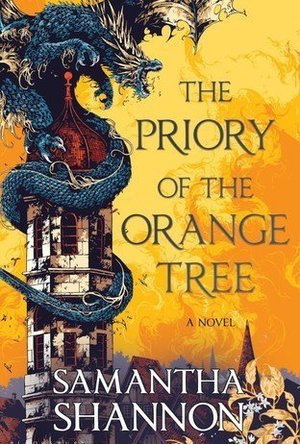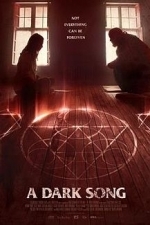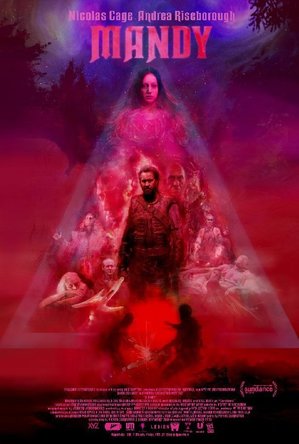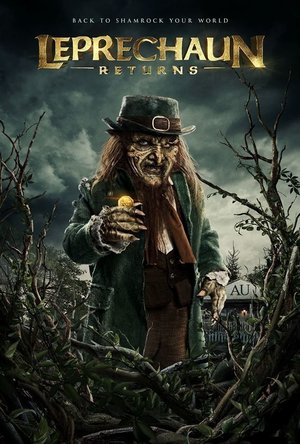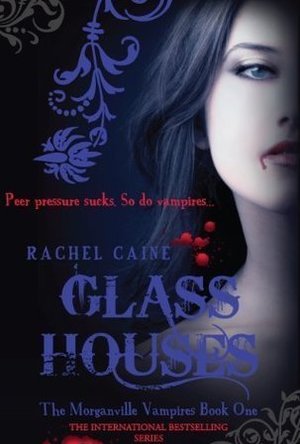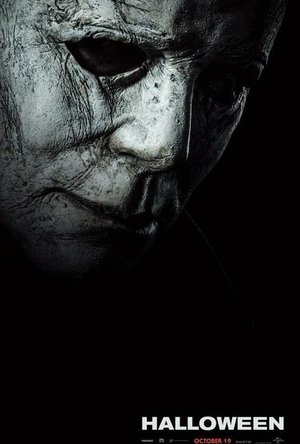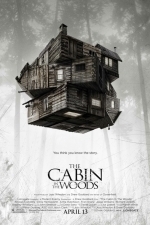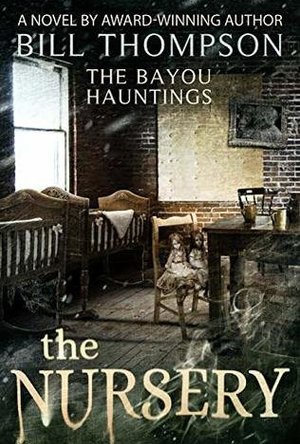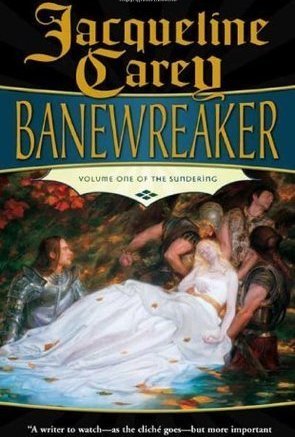Search
Goddess in the Stacks (553 KP) rated The Priory of the Orange Tree in Books
May 3, 2019
AMAZING epic fantasy.
Holy COW, you guys. I keep saying “I haven’t read much epic fantasy lately” and “I don’t have time to read such long books/series” but I made an exception for Priory, and I’m SO glad I did. Just WOW.
So the basic premise of this world is that The Nameless One (some gigantic evil dragon) was locked away a thousand years ago, and all his minions with him. The exact details of how and who did it have been mostly lost to history. It’s said that as long as the House of Berethnet rules Inys, he’ll never rise again, and Berethnet queens always have one child, a daughter. The current queen, however, is unwed, and minions of The Nameless One have begun rising, and in fact have conquered a few neighboring nations. We have three main factions of countries; The East, who have dragon riders, but make a distinction between their dragons, who are aquatic and identify with the stars, and the evil minions of The Nameless One, who are full of fire. Then we have Virtudom, which is headed by Inys, and is a coalition of countries who have made a religion of the Knightly Virtues. This is the West, and they make no distinction between the draconic servants of The Nameless One and the water dragons of the East. This has forced a split between the West and the East, because Virtudom won’t have anything to do with countries that have anything to do with dragons, because most of what they see is the third faction – the Draconic countries. These are countries conquered by minions of the Nameless One, and they are full of chaos, fire, evil, and plague.
This is the world the book opens on. Most of our main characters – Queen Sabran, her handmaiden Ead, the dragonrider Tané – are women, but we also have Doctor Niclays Roos, an alchemist, and Lord Arteloth Beck, a friend of the Queen. In this world, women are just as capable as men, and are treated as such. There are female knights, and same-sex relationships are just as ordinary as opposite-sex ones. There is a bit too much moral emphasis placed on monogamy/sex within the bounds of marriage, but I guess that’s “Knightly Virtue” for you. Skin color is only mentioned a couple of times, but I seem to remember Lord Arteloth being described as very dark-skinned, and Ead as golden-brown. Rather nice to see a fantasy NOT all caught up in racial and gender differences. Not to say there isn’t a fair amount of bigotry, but in this book it’s based pretty much solely on nationality and religion. And when the biggest sticking point is “do you like evil dragons or not” that kind of makes sense!
I think the only thing I didn’t like about this book was its size. It’s unwieldy to read, at over 800 pages! I’m not sure why they didn’t break it into a duology. Regardless, if you have the choice, I’d read it on Kindle. It would be far easier to handle. I’m not complaining about the amount of text, mind you. Just the sheer physical size. I can’t imagine the story being told in less time. There’s So. Much. Here.
This book goes from Queen Sabran’s court to the dragonrider academy in the East, to the draconic kingdom of Yscalin, to the Abyss where the Nameless One sleeps. We see glittering courts, hidden islands, sweltering tunnels through volcanic mountains, and deep valleys with secret magic trees. We battle wyrms and cockatrices, swim through endless seas with dragonriders, sail through storms with pirate crews, and navigate the trickiest of diplomatic matters with courtiers. The Priory of the Orange Tree paints an elaborate, incredibly complex world and I am absolutely here for it.
Okay, so one tiny quibble – while I liked the romance, I feel like it started kind of oddly. I didn’t see any reason for the initial spark. From there, it progressed perfectly, but I just didn’t get the beginning.
This book has multiple queer couples! There’s at least one same-sex couple mentioned as attending a party; Doctor Roos spends a lot of time mourning his dead lover, and there’s the lesbian romance between a couple of main characters. And one character has at least strong affection for a man before falling in love with a woman; I think she was in love with both. No trans or ace rep, but plenty of gay, lesbian, and bi!
This is hands-down the best book I’ve read so far this year. It took me three days – it’s a big book – but it is absolutely fantastic.
You can find all my reviews at http://goddessinthestacks.com
So the basic premise of this world is that The Nameless One (some gigantic evil dragon) was locked away a thousand years ago, and all his minions with him. The exact details of how and who did it have been mostly lost to history. It’s said that as long as the House of Berethnet rules Inys, he’ll never rise again, and Berethnet queens always have one child, a daughter. The current queen, however, is unwed, and minions of The Nameless One have begun rising, and in fact have conquered a few neighboring nations. We have three main factions of countries; The East, who have dragon riders, but make a distinction between their dragons, who are aquatic and identify with the stars, and the evil minions of The Nameless One, who are full of fire. Then we have Virtudom, which is headed by Inys, and is a coalition of countries who have made a religion of the Knightly Virtues. This is the West, and they make no distinction between the draconic servants of The Nameless One and the water dragons of the East. This has forced a split between the West and the East, because Virtudom won’t have anything to do with countries that have anything to do with dragons, because most of what they see is the third faction – the Draconic countries. These are countries conquered by minions of the Nameless One, and they are full of chaos, fire, evil, and plague.
This is the world the book opens on. Most of our main characters – Queen Sabran, her handmaiden Ead, the dragonrider Tané – are women, but we also have Doctor Niclays Roos, an alchemist, and Lord Arteloth Beck, a friend of the Queen. In this world, women are just as capable as men, and are treated as such. There are female knights, and same-sex relationships are just as ordinary as opposite-sex ones. There is a bit too much moral emphasis placed on monogamy/sex within the bounds of marriage, but I guess that’s “Knightly Virtue” for you. Skin color is only mentioned a couple of times, but I seem to remember Lord Arteloth being described as very dark-skinned, and Ead as golden-brown. Rather nice to see a fantasy NOT all caught up in racial and gender differences. Not to say there isn’t a fair amount of bigotry, but in this book it’s based pretty much solely on nationality and religion. And when the biggest sticking point is “do you like evil dragons or not” that kind of makes sense!
I think the only thing I didn’t like about this book was its size. It’s unwieldy to read, at over 800 pages! I’m not sure why they didn’t break it into a duology. Regardless, if you have the choice, I’d read it on Kindle. It would be far easier to handle. I’m not complaining about the amount of text, mind you. Just the sheer physical size. I can’t imagine the story being told in less time. There’s So. Much. Here.
This book goes from Queen Sabran’s court to the dragonrider academy in the East, to the draconic kingdom of Yscalin, to the Abyss where the Nameless One sleeps. We see glittering courts, hidden islands, sweltering tunnels through volcanic mountains, and deep valleys with secret magic trees. We battle wyrms and cockatrices, swim through endless seas with dragonriders, sail through storms with pirate crews, and navigate the trickiest of diplomatic matters with courtiers. The Priory of the Orange Tree paints an elaborate, incredibly complex world and I am absolutely here for it.
Okay, so one tiny quibble – while I liked the romance, I feel like it started kind of oddly. I didn’t see any reason for the initial spark. From there, it progressed perfectly, but I just didn’t get the beginning.
This book has multiple queer couples! There’s at least one same-sex couple mentioned as attending a party; Doctor Roos spends a lot of time mourning his dead lover, and there’s the lesbian romance between a couple of main characters. And one character has at least strong affection for a man before falling in love with a woman; I think she was in love with both. No trans or ace rep, but plenty of gay, lesbian, and bi!
This is hands-down the best book I’ve read so far this year. It took me three days – it’s a big book – but it is absolutely fantastic.
You can find all my reviews at http://goddessinthestacks.com
Darren (1599 KP) rated A Dark Song (2016) in Movies
Jun 20, 2019
Story: A Dark Song starts as Sophia Howard (Walker) rents a remote house in the countryside, she hires occultist Joseph Solomon (Oram) to perform a yearlong ritual so Sophia can communicate with her late son, one more time.
With the rules set, the ritual begins leaving the two to need to be prepared for anything good or evil that they would summon from the other side.
Thoughts on A Dark Song
Characters – Sophia is the lady that wants to communicate with dead child, she has turned to an occultist to help her, she will go through as many different rituals to achieve her desired outcome. Joseph Solomon is the occultist that reluctant agrees to help Sophia with her ritual, he has plenty of experience and even when he knows she is lying he will help her.
Performances – Steve Oram and Catherine Walker are the main two stars of this movie, their performances need to be strong for this movie to work. They both give us captivating performance where you are wondering where the characters will be going next.
Story – The story dives into the idea of how far would you go to communicate with a dead loved one, would you turn to the occult knowing it wouldn’t be the best idea because of what else you could summon, or would you let the police punish the people responsible, these are the main questions being asked in this movie. When we follow the ritual side of the film doesn’t give us a full scale of the time the two are performing them, but then again the story doesn’t focus on the rituals that much, rather focusing on what would be the correct decision made by the Sophia.
Horror – The horror involved in this movie is mostly about what could happen with rituals are performed, we only get a moment of actual horror late in the film.
Settings – The settings keep the two in one house for up to a year which gives the characters the much-needed isolation for the rituals to happen.
Special Effects – The effects used in the film are save the few moments that need them and seem to be great practical use of them too.
Scene of the Movie – Cross the line.
That Moment That Annoyed Me – While you are left waiting for something to happen, not much does happen.
Final Thoughts – This is a horror that focuses more in the drama of what could happen and following to people that need to focus on letting the past lay over trying to scare us.
Overall: A horror that lacks the scares.
https://moviesreview101.com/2018/10/18/a-dark-song-2016/gnree/
With the rules set, the ritual begins leaving the two to need to be prepared for anything good or evil that they would summon from the other side.
Thoughts on A Dark Song
Characters – Sophia is the lady that wants to communicate with dead child, she has turned to an occultist to help her, she will go through as many different rituals to achieve her desired outcome. Joseph Solomon is the occultist that reluctant agrees to help Sophia with her ritual, he has plenty of experience and even when he knows she is lying he will help her.
Performances – Steve Oram and Catherine Walker are the main two stars of this movie, their performances need to be strong for this movie to work. They both give us captivating performance where you are wondering where the characters will be going next.
Story – The story dives into the idea of how far would you go to communicate with a dead loved one, would you turn to the occult knowing it wouldn’t be the best idea because of what else you could summon, or would you let the police punish the people responsible, these are the main questions being asked in this movie. When we follow the ritual side of the film doesn’t give us a full scale of the time the two are performing them, but then again the story doesn’t focus on the rituals that much, rather focusing on what would be the correct decision made by the Sophia.
Horror – The horror involved in this movie is mostly about what could happen with rituals are performed, we only get a moment of actual horror late in the film.
Settings – The settings keep the two in one house for up to a year which gives the characters the much-needed isolation for the rituals to happen.
Special Effects – The effects used in the film are save the few moments that need them and seem to be great practical use of them too.
Scene of the Movie – Cross the line.
That Moment That Annoyed Me – While you are left waiting for something to happen, not much does happen.
Final Thoughts – This is a horror that focuses more in the drama of what could happen and following to people that need to focus on letting the past lay over trying to scare us.
Overall: A horror that lacks the scares.
https://moviesreview101.com/2018/10/18/a-dark-song-2016/gnree/
Jesters_folly (230 KP) rated Mandy (2018) in Movies
Sep 25, 2019
Contains spoilers, click to show
Red Miller (Nicholas Cage) is sent on a rampaging quest for vengeance when an evil cult abducts and kill his partner, Mandy Bloom.
The story is simple, Mandy and Red live alone in a forest. By chance Mandy is spotted by a cult leader who decided that he wants her to join him. Things don’t go to plan and Mandy ends up dead and Red starts on a quest for revenge. Simple and familiar, it’s not an uncommon plot, however Mandy is part film, part drug filled dream with snippets of animation thrown in, overlaid with a psychedelic, prog rock soundtrack. It has drugs, cults, demonic, slipknot esc bikers, (male) nudity, chainsaws and crossbows, religious parables and Jesus parallels. There is a metaphorical decent to hell and there is Nicholas Cage. All this is shot with constantly changing, coloured filters and distorted voices.
You can probably tell that Mandy isn’t for everyone, at times the film feels like an Italian horror, something like Suspiria or Deep Red and other time it seems like someone has brought a 70’s or 80’s rock/metal album cover to life. Throw in some animation that would be at home in ‘Heavy Metal’ Magazine, turn the crazy dial up to 11 and let Nicolas Cage (slowly) off the sanity leash and you have Mandy.
There are plot point that are not explained, for example Red suddenly has a friend who has a cross bow stored away for him and Red suddenly has a forge and knows how to use it. Is Mandy some kind of witch and, of course, is Red dead at the end.
I would say that there are some crazy scenes but the whole film is crazy but it does lead to some great scene’s like a chainsaw duel.
As I said, Mandy isn’t for everyone, it has a simple plot that has been turned in to a surreal nightmare so if you don’t like weird don’t watch this.
Mandy is also slow to get started as it builds up the atmosphere. I think that, if the film kept the atmosphere it starts with it could have been a similar tone to something like Midsommar however by the halfway point it has past that and, by the end the film just takes a head dive down the rabbit hole (almost literally).
Given all that I found it hard to rate, it has the feel of a 70’s horror and an 80’s grindhouse, some of the filters make it hard to understand some of the lines and the colour filters were disturbing and distracting although most of this was on purpose but over all I did enjoy it.
The story is simple, Mandy and Red live alone in a forest. By chance Mandy is spotted by a cult leader who decided that he wants her to join him. Things don’t go to plan and Mandy ends up dead and Red starts on a quest for revenge. Simple and familiar, it’s not an uncommon plot, however Mandy is part film, part drug filled dream with snippets of animation thrown in, overlaid with a psychedelic, prog rock soundtrack. It has drugs, cults, demonic, slipknot esc bikers, (male) nudity, chainsaws and crossbows, religious parables and Jesus parallels. There is a metaphorical decent to hell and there is Nicholas Cage. All this is shot with constantly changing, coloured filters and distorted voices.
You can probably tell that Mandy isn’t for everyone, at times the film feels like an Italian horror, something like Suspiria or Deep Red and other time it seems like someone has brought a 70’s or 80’s rock/metal album cover to life. Throw in some animation that would be at home in ‘Heavy Metal’ Magazine, turn the crazy dial up to 11 and let Nicolas Cage (slowly) off the sanity leash and you have Mandy.
There are plot point that are not explained, for example Red suddenly has a friend who has a cross bow stored away for him and Red suddenly has a forge and knows how to use it. Is Mandy some kind of witch and, of course, is Red dead at the end.
I would say that there are some crazy scenes but the whole film is crazy but it does lead to some great scene’s like a chainsaw duel.
As I said, Mandy isn’t for everyone, it has a simple plot that has been turned in to a surreal nightmare so if you don’t like weird don’t watch this.
Mandy is also slow to get started as it builds up the atmosphere. I think that, if the film kept the atmosphere it starts with it could have been a similar tone to something like Midsommar however by the halfway point it has past that and, by the end the film just takes a head dive down the rabbit hole (almost literally).
Given all that I found it hard to rate, it has the feel of a 70’s horror and an 80’s grindhouse, some of the filters make it hard to understand some of the lines and the colour filters were disturbing and distracting although most of this was on purpose but over all I did enjoy it.
Darren (1599 KP) rated Leprechaun Returns (2019) in Movies
Oct 31, 2019
Characters – Lila is the daughter or Tory (from the original) she is moving back to the same house in the vents of the original to be part of a college sorority, she is clearly the outsider of the group desperate to make new friends after a lifetime of looking after her mother. She learns to start believing what her mother did and proves to be resourceful throughout the film. Katie is the slutty of the friends, Rose is the one trying to make a change and Meredith is the drunk one, while they are meant to be portrayed as smart, they are painfully generic and dumb throughout. The Leprechaun has returned looking for his gold and this time he isn’t going to be a friendly, trying to get his power back. He uses rhymes to try and scare the characters and new powers to make object move to kill.
Performances – Taylor Spreitler does every she can in the leading role, trying to step into the shoes of Jennifer Aniston isn’t going to be easy for anyone, Pepi Sonuga, Sai Bennett and Emily Reid are the basic supporting performances, playing confusing characters. Linden Porco does well as the leprechaun being evil enough.
Story – The story picks up 25 years after the original film where we follow a new group of students that head to the house from the original only to find themselves being haunted by the leprechaun who just wants his gold back. The idea that we are taught to forget any of the sequels is a good thing and arguable the only good thing about the story, the rest just makes the characters seem confusing, with the story wanting to say these girls are smart with what they are doing, but as soon as the horror starts they just become screaming messes. It does keep the tone of a slasher story though it just never captures the tone of the first film enough.
Comedy/Horror – The comedy comes from the painfully rhymes that the leprechaun gives, they are very pun heavy which will often make your eyes roll. The horror does come from the kills which are bloody and one is in fact an original one too.
Settings – The film is set in the same house as the original film, it needs to be rebuilt so people could live there, it shows the evil hasn’t left this place after 25-years.
Special Effects – The effects in the film are easily one of the better parts because we get the unique looking kills that don’t shy away from the camera.
Scene of the Movie – Solar panel
That Moment That Annoyed Me – The characters being confusing.
Final Thoughts – This is a disappoint horror sequel reboot, it is filled with too many puns and tries to be self-aware of everything going on.
Overall: Leprechaun is better off dead.
Performances – Taylor Spreitler does every she can in the leading role, trying to step into the shoes of Jennifer Aniston isn’t going to be easy for anyone, Pepi Sonuga, Sai Bennett and Emily Reid are the basic supporting performances, playing confusing characters. Linden Porco does well as the leprechaun being evil enough.
Story – The story picks up 25 years after the original film where we follow a new group of students that head to the house from the original only to find themselves being haunted by the leprechaun who just wants his gold back. The idea that we are taught to forget any of the sequels is a good thing and arguable the only good thing about the story, the rest just makes the characters seem confusing, with the story wanting to say these girls are smart with what they are doing, but as soon as the horror starts they just become screaming messes. It does keep the tone of a slasher story though it just never captures the tone of the first film enough.
Comedy/Horror – The comedy comes from the painfully rhymes that the leprechaun gives, they are very pun heavy which will often make your eyes roll. The horror does come from the kills which are bloody and one is in fact an original one too.
Settings – The film is set in the same house as the original film, it needs to be rebuilt so people could live there, it shows the evil hasn’t left this place after 25-years.
Special Effects – The effects in the film are easily one of the better parts because we get the unique looking kills that don’t shy away from the camera.
Scene of the Movie – Solar panel
That Moment That Annoyed Me – The characters being confusing.
Final Thoughts – This is a disappoint horror sequel reboot, it is filled with too many puns and tries to be self-aware of everything going on.
Overall: Leprechaun is better off dead.
Rachel King (13 KP) rated Glass Houses (The Morganville Vampires, #1) in Books
Feb 11, 2019
I found this book to be a nice change from the typical high school setting that so many Young Adult books take place in - with good reason, of course. So what if she's still only 16, she's in college! Unfortunately, she still has not outgrown the evil female clique syndrome that plague so many stories. Some elements of the story remind me of my own days in university, but the book takes them all to the extreme. On a side note, it's a good thing she's so dang smart, because from my experience, skipping classes like she does throughout the text should, in reality, result in failing grades. I guess that's the beauty of fantasy literature - you can skip all the drudgery and go straight for the exciting bits of life.
The part I did not really understand - and I am still waiting for an explanation after finishing the book - is how the psychotic Monica seems to get away with more than the resident vampires do. I mean, if the vamps both built and run the town of Morganville, it makes more sense that they would want to appear more nefarious than the lowly humans.
I also found it strangely refreshing that the vampires were wholely and completely the bad guys - no human-vampire romantic happenings, and no, Miranda the vision-plagued goth and her undead boyfriend Charles do not count. But I did find the head vampire Amelie very intriguing, since she seems less interested in bloody deaths and widespread property damage and more interested in maintaining power and protecting her assets, a trait that no other vampire in the novel seemed to exhibit.
I can not wait to get my hands on the next novel in the series, The Dead Girls' Dance, since Michael's state of ghost / not-ghost / Glass House incarnate has not been resolved enough for me at all!
The part I did not really understand - and I am still waiting for an explanation after finishing the book - is how the psychotic Monica seems to get away with more than the resident vampires do. I mean, if the vamps both built and run the town of Morganville, it makes more sense that they would want to appear more nefarious than the lowly humans.
I also found it strangely refreshing that the vampires were wholely and completely the bad guys - no human-vampire romantic happenings, and no, Miranda the vision-plagued goth and her undead boyfriend Charles do not count. But I did find the head vampire Amelie very intriguing, since she seems less interested in bloody deaths and widespread property damage and more interested in maintaining power and protecting her assets, a trait that no other vampire in the novel seemed to exhibit.
I can not wait to get my hands on the next novel in the series, The Dead Girls' Dance, since Michael's state of ghost / not-ghost / Glass House incarnate has not been resolved enough for me at all!
Michael Packner (32 KP) rated Halloween (2018) in Movies
Jun 15, 2019 (Updated Jun 15, 2019)
The film starts off really good. The first half of the film is definitely quality. (1 more)
The strongest point of the film is an absolutely beautiful and brutal tracking shot that lasts about two minutes. Really epic stuff.
The second half of the film. At about halfway the film hits a wall and freefalls from there. (3 more)
Vicki's death scene is played for cheap laughs when the scene should've been dead serious. This is the start of the freefall.
The twist with the "New Loomis" is BRUTALLY awful.
The "epic" final act and long awaited showdown between Laurie and Michael is epically meh.
Before I start I want to qualify this by saying other than the first two films which are classics, I really do not like this series. It's overrated and boring and truthfully everything past part 2 is mediocre to crap, so I went into this honestly expecting to hate it and watched it more for my wife than myself. That being said, the first half hour I felt like I was right, but then it did get better. This was a better sequel than the previous ones. Michael is evil again and he is BRUTAL. The use of comedy in this film was overdone to a huge fault, especially one kill scene where they used comedy to absolutely kill the tension and the scene came off absolutely disrespectful and just mean spirited in a bad way. The new Loomis subplot was awful. Why? Just why? A father with his son makes the dumbest decision ever in a horror movie and that's ok, but people forgive it because it's this franchise. I did enjoy the final showdown between Michael and Laurie though so that's a positive. I rank the film as at least 3 or 4 in the franchise so there's that. At least I had fun and enjoyed it for the most part. Never let a comedian write a horror movie ever again.
KatieLouCreate (162 KP) rated Frankenstein in Books
Mar 5, 2018
Contains spoilers, click to show
It's been a while since I read this book but I remember why I did and did not enjoy this book. Firstly, the book it worth the read. It may seem slow to start with but you do get rewarded in the end. It is just that, unfortunately, Victor Frankenstein is a very boring character. He is just so boring and, lets face it, a little bit fickle. He spent his life working towards this goal, leaving his family and loved ones behind, practically, all to be able to resurrect the dead back to life. He accomplishes it only to realise what an abomination he has created. So what does he do? He runs away.
The most interesting part about the book actually comes from the perspective of the monster himself. It is here where we see true voice, character, and emotion. We see the monsters side of things and realise he is not in fact a monster. He is a product of his surroundings. He was treated like a monster and so he became one.
To me, it spreads an important message about love and acceptance. The monster would not have become evil is Victor had remained with his creation and helped him instead of fleeing and leaving the monster, new to the big wide world, by himself.
Although I believe Mart was trying to give us a different, more religious message, about the dangers of man performing a woman's role of giving birth and how that is an abomination to mankind, I think the message I stated beforehand is better and stronger.
If you can get through Victor's boring and annoying personality then the book is worth the read. If not, then maybe just read the middle of the book-- from the monsters perspective, although it would probably seem a little weird and out of context without the rest of the story.
The most interesting part about the book actually comes from the perspective of the monster himself. It is here where we see true voice, character, and emotion. We see the monsters side of things and realise he is not in fact a monster. He is a product of his surroundings. He was treated like a monster and so he became one.
To me, it spreads an important message about love and acceptance. The monster would not have become evil is Victor had remained with his creation and helped him instead of fleeing and leaving the monster, new to the big wide world, by himself.
Although I believe Mart was trying to give us a different, more religious message, about the dangers of man performing a woman's role of giving birth and how that is an abomination to mankind, I think the message I stated beforehand is better and stronger.
If you can get through Victor's boring and annoying personality then the book is worth the read. If not, then maybe just read the middle of the book-- from the monsters perspective, although it would probably seem a little weird and out of context without the rest of the story.
Gareth von Kallenbach (980 KP) rated The Cabin in the Woods (2012) in Movies
Aug 7, 2019
Joss Whedon (of Buffy/Firefly/Avengers fame) has written one of the most interestingly confusing scripts in recent history (with the help of co-writer Drew Goddard, who also directed the film). Starring Chris Hemsworth (Thor) as “the jock,” and a cast of other young folk, The Cabin in the Woods tackles what’s best described as an entirely new genre of filmmaking. This became obvious to me immediately after experiencing the last 30 seconds of the film.
The movie starts off with two disjointed storylines. In one plot thread, you have five college kids heading out for a weekend at a cabin on a lake. In the other, you have two professionally dressed desk jockeys going to work in what seems to be a mission control center. It becomes evident very early on that the organization for which these two men work is tracking the five vacationers.
The college group is comprised of the usual roles: the Jock, the Stoner, the Attractive Nerd, the Other Attractive Nerd, and the Slut. The five find themselves in a stereotypical horror film cabin. As the plot thickens, confusion sets in, and it becomes evident that their actions and fates are being controlled to some degree.
The most important observation I can share with you is that this movie was nothing like what I expected. It kept getting stranger and more unique the longer it went. Aside from the cheesy use of word graphics when the title was displayed, the cinematography is great. The acting is only decent, but the writing is entertaining. The film didn’t follow the normal conventions of a horror movie, but instead seemed to be an amalgamation of fantasy, horror and comedy; it was strongly reminiscent of the Evil Dead series.
I recommend watching The Cabin in the Woods purely for its unique and interesting take on a familiar story. You will be entertained.
The movie starts off with two disjointed storylines. In one plot thread, you have five college kids heading out for a weekend at a cabin on a lake. In the other, you have two professionally dressed desk jockeys going to work in what seems to be a mission control center. It becomes evident very early on that the organization for which these two men work is tracking the five vacationers.
The college group is comprised of the usual roles: the Jock, the Stoner, the Attractive Nerd, the Other Attractive Nerd, and the Slut. The five find themselves in a stereotypical horror film cabin. As the plot thickens, confusion sets in, and it becomes evident that their actions and fates are being controlled to some degree.
The most important observation I can share with you is that this movie was nothing like what I expected. It kept getting stranger and more unique the longer it went. Aside from the cheesy use of word graphics when the title was displayed, the cinematography is great. The acting is only decent, but the writing is entertaining. The film didn’t follow the normal conventions of a horror movie, but instead seemed to be an amalgamation of fantasy, horror and comedy; it was strongly reminiscent of the Evil Dead series.
I recommend watching The Cabin in the Woods purely for its unique and interesting take on a familiar story. You will be entertained.
Billie Wichkan (118 KP) rated The Nursery (The Bayou Hauntings #3) in Books
May 22, 2019
A house that sat empty for fifty years as its dead owner instructed. A locked room with no key. A single father with eight-year-old twin girls. A nursery from long, long ago that no child ever played in. There are eerie things going on at The Arbors in St. Francisville, Louisiana. Architect Jordan Blanchard is joined by his friend Callie and Landry Drake to learn the secrets of a domineering matriarch whose two husbands died in bizarre ways. They explore the house as someone watches from a hidden place high above. The Nursery, the third book in the series, will keep you up late at night wondering what’s behind the next door, what lies beyond the mirror and who hides and waits at The Arbors.
The Nursery by Bill Thompson is a book I requested from NetGalley and the review is voluntary.
This is the third book in the series and I wasn’t aware of that when I started this but it did not hamper me one bit in reading this one. The author gives you little bits on the background as you go along so it was very easy to pick up on.
This is not your typical haunted house story. There is a nice ghost and malevolent ghost, hidden bodies, a child’s grave where one did not belong, and travels through a mirror to other dimensions. And that doesn’t even touch the real-life evil that’s stalking the family’s every move. This is a different type of ghost story.
I love the location settings and the whole premise behind this series of paranormal interweaved with the characters lives.
I want to say so much more but I don’t want to give anything away. This book has so much going for it and I am definitely getting the previous books and following this author. This book had me right from the start and I hope there are more to come in this series.
The Nursery by Bill Thompson is a book I requested from NetGalley and the review is voluntary.
This is the third book in the series and I wasn’t aware of that when I started this but it did not hamper me one bit in reading this one. The author gives you little bits on the background as you go along so it was very easy to pick up on.
This is not your typical haunted house story. There is a nice ghost and malevolent ghost, hidden bodies, a child’s grave where one did not belong, and travels through a mirror to other dimensions. And that doesn’t even touch the real-life evil that’s stalking the family’s every move. This is a different type of ghost story.
I love the location settings and the whole premise behind this series of paranormal interweaved with the characters lives.
I want to say so much more but I don’t want to give anything away. This book has so much going for it and I am definitely getting the previous books and following this author. This book had me right from the start and I hope there are more to come in this series.
Mandy and G.D. Burkhead (26 KP) rated Banewreaker in Books
May 20, 2018
Shelf Life – Banewreaker Will Make You Feel Bad for Sauron
Contains spoilers, click to show
Very few fantasy fans can get away with admitting that they aren’t all that big into sweeping, high epic fantasy à la Lord of the Rings or the Pern stories or everything that Terry Brooks writes. Many non-fantasy fans, however, can point to these tales as examples of why they aren’t into fantasy. Like it or not, it’s hard not to see the latter group’s point, as a lot of high fantasy is riddled with confusing terminology, rehashed stories, and genre clichés. This is not to say that these stories are bad, per sé, just that they can easily turn off readers who aren’t in the right kind of crowd.
Banewreaker, the first book in Jacqueline Carey’s two-part volume The Sundering, will probably not change any opinions in this respect, then, as it’s sweeping high fantasy to the core. This, as it turns out, is both its greatest strength and its greatest weakness.
There are some reviews out there that laud Banewreaker as a masterful examination of subjective viewpoints in an epic fantasy turned into a human tragedy by a simple change of perspective. And they are absolutely correct.
There are other reviews, however, that call the book out as a heap of all of the stalest fantasy clichés piled one atop the other in a confusing and pretentious jumble with a shellacking of purple prose for good measure. And they are also absolutely correct.
Let me explain.
For starters, it would be inaccurate to say that this story is full of clichés. This story is clichés. This story is every familiar and used-up trope you would expect from a high fantasy, all of those details that have been done to death in thousands of other versions until almost nothing that happens seems original anymore.
This is what’s going to turn off a lot of people. But the thing is, Banewreaker has to be this way. It wants the reader to look at all of the things that they’ve come to expect from a fantasy epic and then, by shifting the narrative focus, realize that all of these beloved tropes are actually, when you think about it, tragic as hell.
In other words, it’s Lord of the Rings from Sauron’s point of view.
It’s not a riff, though. It’s not goofy like most of the stuff I go in for. It takes its subject just as seriously as the stories that it’s mirroring, and this is what makes the whole story ultimately so gripping and so moving.
The story starts out like many stories of this magnitude, with exposition stretching back to the Dawn of This Particular Creation. In this case, we have a protogenos world god named Uru-Alat who died and gave rise to seven smaller godlike beings called Shapers. First comes Haomane, who becomes the Lord of Thought and sets himself up as head honcho for this ensuing pantheon. Second is Arahila, the Basically a Love Goddess; and third is Satoris, whose purview was “the quickening of the flesh,” which is high fantasy speak for sexy times. Four more Shapers come after this who, for the sake of brevity, we’ll be glossing over.
To summarize the important godly exposition, the Seven Shapers set about shaping the world to the surprise of no one. Haomane creates elves (here called Ellyl, but if you’ve ever even looked at a fantasy, you know that they’re the elves here), Arahila creates humans, and Satoris doesn’t create anything because he’s busy hanging out with dragons and learning their wisdom. Satoris grants his fleshy quickening to the humans but not the elves, because Haomane didn’t want his elves to do that. Then Haomane decides he doesn’t want the humans to do that either, but Satoris refuses to take the gift away again. Conflict escalates, god wars ensue, and the world splits into two continents, with Satoris ostracized from his brethren on one and the remaining Shapers on the other. By the time the dust has settled, Satoris is scarred and burned pitch black, living in a mostly dead land thanks to Haomane’s wrath, but with a dagger in his possession that is the only weapon capable of killing any of the Shapers.
The story itself picks up thousands of years later, with Satoris as the Satan/Sauron stand-in living in a forbidding land surrounded by classically evil things like trolls, giant spiders, and insane people. Since Haomane is the head god, the rest of the world believes Satoris to be a terrible figure of evil and betrayal, while Satoris’s few allies know him as a pitiable and misunderstood figure who only ever wanted to honor his word and do right by his own sense of morality rather than the dictates of his elder brother god king.
From here the plot becomes the typical Army of Good vs. Army of Evil adventure, but with the protagonistic focus on Satoris and his allies. His trolls we see not as a mindless horde but as a simple, honorable people who happily serve their lord because he happily serves them right back. The mad individuals inhabiting his fortress are castaways from normal society with nowhere else to go. And the giant spiders just happen to live there and be bigger than normal, with no sinister intentions beyond that.
And just like that, by actually showing us the home life of the ultimate in evil fantasy tropes, we see how easily one side’s view of evil is another’s view of good. In doing so, Banewreaker becomes perhaps the first sweeping fantasy epic with no real bad guy, just two sides of an unfortunate conflict. Both sides have their likeable characters, both sides seem from their view to be in the right, and pretty soon you, as the reader, will stop cheering for either one, because whenever one person that you like succeeds it means that another person whom you also like is failing.
In fact, the closest thing that this story has to a clearly-labeled “evil” character is the sorceress Lilias, and even then, she’s not evil so much as a woman who has done some bad things for completely understandable reasons. Lilias, in fact, is one of the most pitiful characters in this whole saga of pitiable characters, with her fears and attachments closely mirroring those of most readers, only amplified by her immortality and magical powers. She is afraid of dying. She wants to be more in the grand scheme of things than just another man’s wife or another country’s momentary ruler, both of which would just be tiny moments in a long history. She likes her youth. She likes having pretty things and pretty people around her. And from her interactions with her dragon mentor and apparently only friend, Calandor, we see that she is also capable of intense affection and even love just as she is capable of indulging in self-centered self-interest that, if not particularly a good trait, is also one that she is not alone in possessing.
Banewreaker, then, is a story with a large cast of characters but very few actual heroes or innocents as well as very few outright villains, which is exactly what it sets out to be. Those who love it and those who hate it both seem to blame this quality in particular for their feelings. The biggest complaint leveled against it (that I have read, anyway) is that the people we should be rooting for do not deserve our sympathy, while the people we should be rooting against are more misguided and unwilling to see things in another light than deserving of our scorn.
This is true. But if it’s a flaw, it’s an intentional one. And if it makes you feel like you shouldn’t be cheering for either side at all in this conflict, that’s the point. This is a story of clichés, yes, but it has something that it needs to say about these clichés and, in doing so, about the subjective and impossibly nebulous quality of morality in general.
In short, here again is another fantasy story about the Forces of Good wiping out an entire nation dedicated to their “evil” enemy. And as the story points out, even if you believe in that cause, you’re still wiping out an entire nation of people. No way is there not a downside to that. Seeing things in a black-and-white morality just means crushing a whole lot of important shades of gray underfoot.
Whether or not you like Banewreaker, then, depends in large part upon how much you realize that Carey as an author is being self-aware. As someone who read and still hasn’t stopped being awed over her Kushiel series, I can’t claim complete objectivity in this area, because I came to Banewreaker already in love with her. I can say, however, that unless you have an intense and searing aversion to ornate and sweeping style, this book is worth any fantasy-lover’s time – especially if you’ve ever felt a pang of empathy for all of the poor villainous mooks that fantasy heroes tend to mow down without a thought because they were the wrong kind of ugly.
Banewreaker, the first book in Jacqueline Carey’s two-part volume The Sundering, will probably not change any opinions in this respect, then, as it’s sweeping high fantasy to the core. This, as it turns out, is both its greatest strength and its greatest weakness.
There are some reviews out there that laud Banewreaker as a masterful examination of subjective viewpoints in an epic fantasy turned into a human tragedy by a simple change of perspective. And they are absolutely correct.
There are other reviews, however, that call the book out as a heap of all of the stalest fantasy clichés piled one atop the other in a confusing and pretentious jumble with a shellacking of purple prose for good measure. And they are also absolutely correct.
Let me explain.
For starters, it would be inaccurate to say that this story is full of clichés. This story is clichés. This story is every familiar and used-up trope you would expect from a high fantasy, all of those details that have been done to death in thousands of other versions until almost nothing that happens seems original anymore.
This is what’s going to turn off a lot of people. But the thing is, Banewreaker has to be this way. It wants the reader to look at all of the things that they’ve come to expect from a fantasy epic and then, by shifting the narrative focus, realize that all of these beloved tropes are actually, when you think about it, tragic as hell.
In other words, it’s Lord of the Rings from Sauron’s point of view.
It’s not a riff, though. It’s not goofy like most of the stuff I go in for. It takes its subject just as seriously as the stories that it’s mirroring, and this is what makes the whole story ultimately so gripping and so moving.
The story starts out like many stories of this magnitude, with exposition stretching back to the Dawn of This Particular Creation. In this case, we have a protogenos world god named Uru-Alat who died and gave rise to seven smaller godlike beings called Shapers. First comes Haomane, who becomes the Lord of Thought and sets himself up as head honcho for this ensuing pantheon. Second is Arahila, the Basically a Love Goddess; and third is Satoris, whose purview was “the quickening of the flesh,” which is high fantasy speak for sexy times. Four more Shapers come after this who, for the sake of brevity, we’ll be glossing over.
To summarize the important godly exposition, the Seven Shapers set about shaping the world to the surprise of no one. Haomane creates elves (here called Ellyl, but if you’ve ever even looked at a fantasy, you know that they’re the elves here), Arahila creates humans, and Satoris doesn’t create anything because he’s busy hanging out with dragons and learning their wisdom. Satoris grants his fleshy quickening to the humans but not the elves, because Haomane didn’t want his elves to do that. Then Haomane decides he doesn’t want the humans to do that either, but Satoris refuses to take the gift away again. Conflict escalates, god wars ensue, and the world splits into two continents, with Satoris ostracized from his brethren on one and the remaining Shapers on the other. By the time the dust has settled, Satoris is scarred and burned pitch black, living in a mostly dead land thanks to Haomane’s wrath, but with a dagger in his possession that is the only weapon capable of killing any of the Shapers.
The story itself picks up thousands of years later, with Satoris as the Satan/Sauron stand-in living in a forbidding land surrounded by classically evil things like trolls, giant spiders, and insane people. Since Haomane is the head god, the rest of the world believes Satoris to be a terrible figure of evil and betrayal, while Satoris’s few allies know him as a pitiable and misunderstood figure who only ever wanted to honor his word and do right by his own sense of morality rather than the dictates of his elder brother god king.
From here the plot becomes the typical Army of Good vs. Army of Evil adventure, but with the protagonistic focus on Satoris and his allies. His trolls we see not as a mindless horde but as a simple, honorable people who happily serve their lord because he happily serves them right back. The mad individuals inhabiting his fortress are castaways from normal society with nowhere else to go. And the giant spiders just happen to live there and be bigger than normal, with no sinister intentions beyond that.
And just like that, by actually showing us the home life of the ultimate in evil fantasy tropes, we see how easily one side’s view of evil is another’s view of good. In doing so, Banewreaker becomes perhaps the first sweeping fantasy epic with no real bad guy, just two sides of an unfortunate conflict. Both sides have their likeable characters, both sides seem from their view to be in the right, and pretty soon you, as the reader, will stop cheering for either one, because whenever one person that you like succeeds it means that another person whom you also like is failing.
In fact, the closest thing that this story has to a clearly-labeled “evil” character is the sorceress Lilias, and even then, she’s not evil so much as a woman who has done some bad things for completely understandable reasons. Lilias, in fact, is one of the most pitiful characters in this whole saga of pitiable characters, with her fears and attachments closely mirroring those of most readers, only amplified by her immortality and magical powers. She is afraid of dying. She wants to be more in the grand scheme of things than just another man’s wife or another country’s momentary ruler, both of which would just be tiny moments in a long history. She likes her youth. She likes having pretty things and pretty people around her. And from her interactions with her dragon mentor and apparently only friend, Calandor, we see that she is also capable of intense affection and even love just as she is capable of indulging in self-centered self-interest that, if not particularly a good trait, is also one that she is not alone in possessing.
Banewreaker, then, is a story with a large cast of characters but very few actual heroes or innocents as well as very few outright villains, which is exactly what it sets out to be. Those who love it and those who hate it both seem to blame this quality in particular for their feelings. The biggest complaint leveled against it (that I have read, anyway) is that the people we should be rooting for do not deserve our sympathy, while the people we should be rooting against are more misguided and unwilling to see things in another light than deserving of our scorn.
This is true. But if it’s a flaw, it’s an intentional one. And if it makes you feel like you shouldn’t be cheering for either side at all in this conflict, that’s the point. This is a story of clichés, yes, but it has something that it needs to say about these clichés and, in doing so, about the subjective and impossibly nebulous quality of morality in general.
In short, here again is another fantasy story about the Forces of Good wiping out an entire nation dedicated to their “evil” enemy. And as the story points out, even if you believe in that cause, you’re still wiping out an entire nation of people. No way is there not a downside to that. Seeing things in a black-and-white morality just means crushing a whole lot of important shades of gray underfoot.
Whether or not you like Banewreaker, then, depends in large part upon how much you realize that Carey as an author is being self-aware. As someone who read and still hasn’t stopped being awed over her Kushiel series, I can’t claim complete objectivity in this area, because I came to Banewreaker already in love with her. I can say, however, that unless you have an intense and searing aversion to ornate and sweeping style, this book is worth any fantasy-lover’s time – especially if you’ve ever felt a pang of empathy for all of the poor villainous mooks that fantasy heroes tend to mow down without a thought because they were the wrong kind of ugly.
